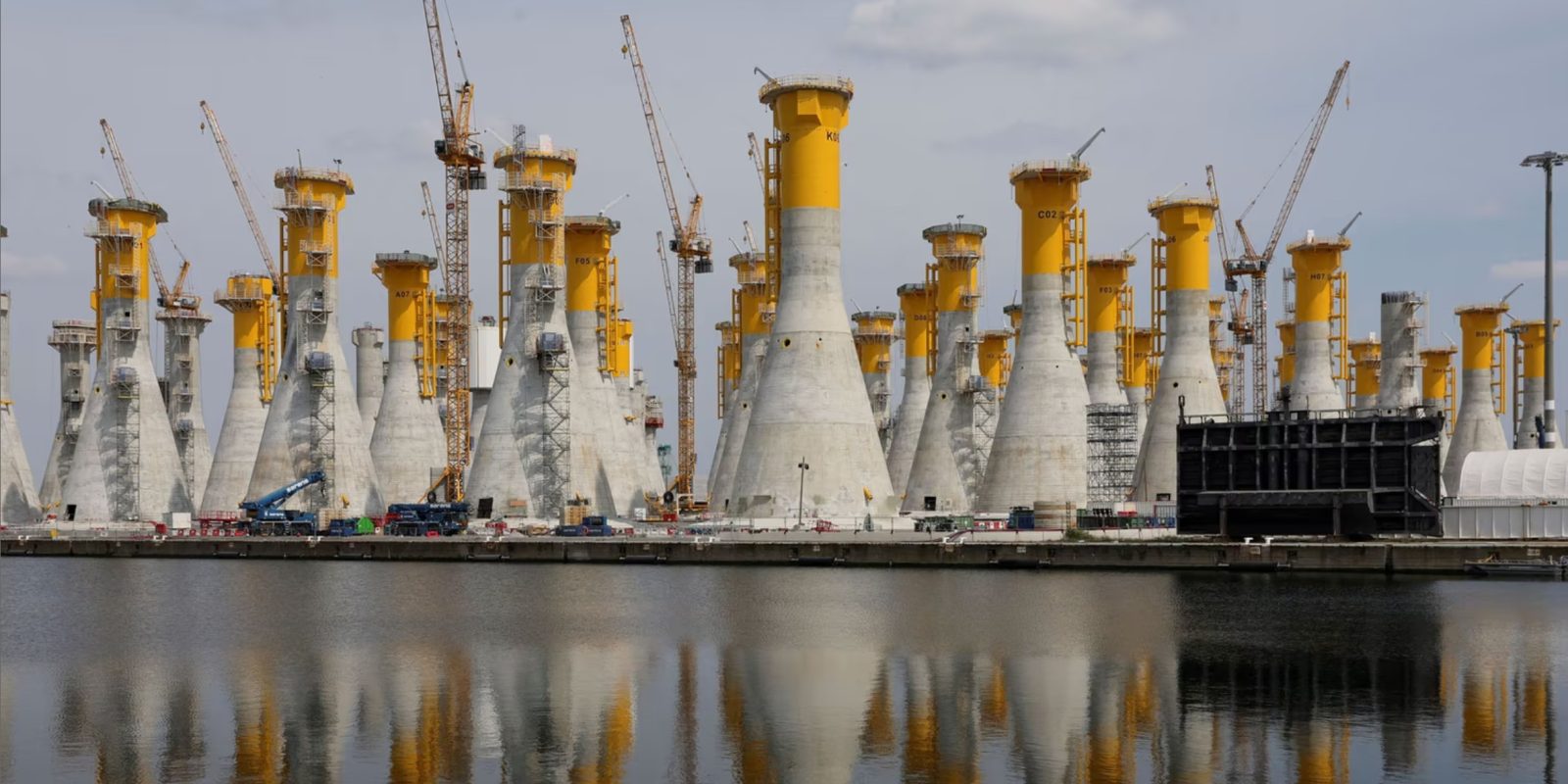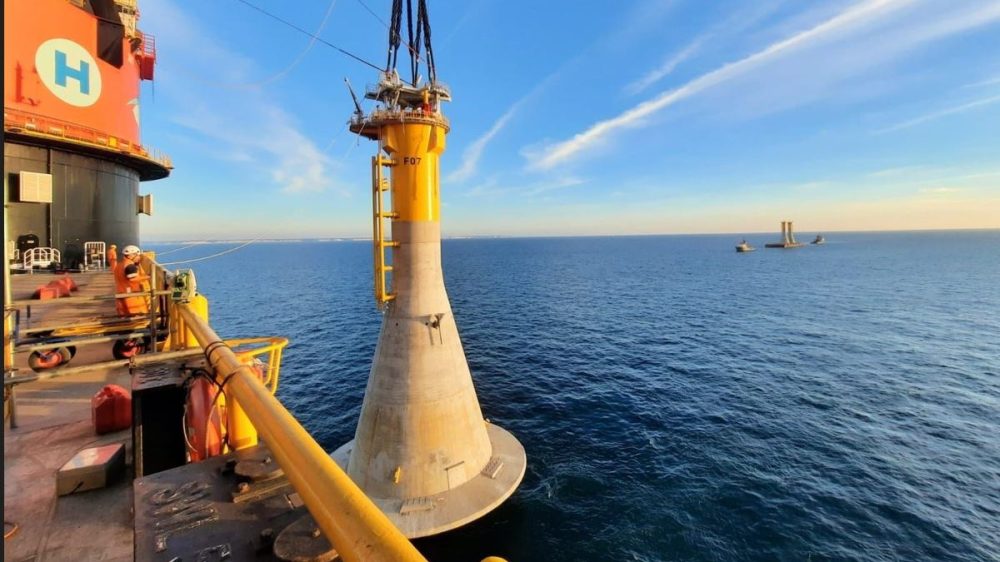
All 72 of the 5,000-tonne gravity-based foundations for France’s 500-megawatt (MW) Fécamp offshore wind farm are now complete.
All about the Fécamp offshore wind farm
The €2 billion ($2.25 billion) Fécamp wind farm features 71 offshore wind turbines with a capacity of 7 MW each. It will generate electricity for around 770,000 people in Normandy.
Each of Fécamp’s 71 gravity-based foundations, which were built at the Grand Port Maritime site in Le Havre, measures between 48m (157 feet) and 54m (177 feet) in height.
The Consortium of Bouygues Travaux Publicis, Saipem, and Boskalis (BSB) supplied and installed the foundations for the Fécamp offshore wind farm, which is sited between 13 and 22 km (8 and 13.6 miles) off the coast of Normandy. The first foundation was transported out to sea by barge and installed in August.

The three companies were awarded the €552 million contract in early 2020 by EDF Renewables, Canadian energy infrastructure company Enbridge, and German clean energy developer wpd Offshore. The started manufacturing Fécamp’s gravity-based foundations in December 2020.
Check out the load-out operations for these giant foundations in this short video:
Meanwhile, the wind turbines were made at the Siemens Gamesa Renewable Energy (SGRE) manufacturing plant in Le Havre and assembly is done at the Port of Cherbourg.
The Fécamp wind farm is expected to come online in 2023.
What’s a gravity-based foundation?
Gravity-based foundations for offshore wind farms are made on land of precast concrete, and they’re either taken to sea by ship or floated out. They can be sited in depths up to 30m (98 feet). The NRDC explains:
Once offshore, the gravity-based foundation is filled with water and sand, sinking the base so that it sits firmly on a layer of gravel that has been prepared on the seabed. It is then ready for the wind turbine to be installed on top of the foundation.
Windpower Engineering explained the advantages of gravity-based foundations:
- Uses lower-cost materials like concrete and steel.
- Proven technology borrowed from oil and gas industries.
- Some designs do not need crane installation.
- Tugboats can move port-assembled floated-to-fixed GBFs into place, reducing costs and risk.
And they also explained what’s not so good:
- Seabed preparation, like dredging, is typically required. This can disturb a significant amount (up to 7%) of the wind farm’s site.
- A larger installed footprint may increase the turbine’s environmental impact.
- Invasive species introduction is possible when towing foundations from port to site.
Read more: Final turbine installed on France’s first offshore wind farm, with Macron pushing hard on renewables
Photo: Pascal Rossgnol/Reddit, May 1, 2022
UnderstandSolar is a free service that links you to top-rated solar installers in your region for personalized solar estimates. Tesla now offers price matching, so it’s important to shop for the best quotes. Click here to learn more and get your quotes. — *ad.
FTC: We use income earning auto affiliate links. More.




Comments